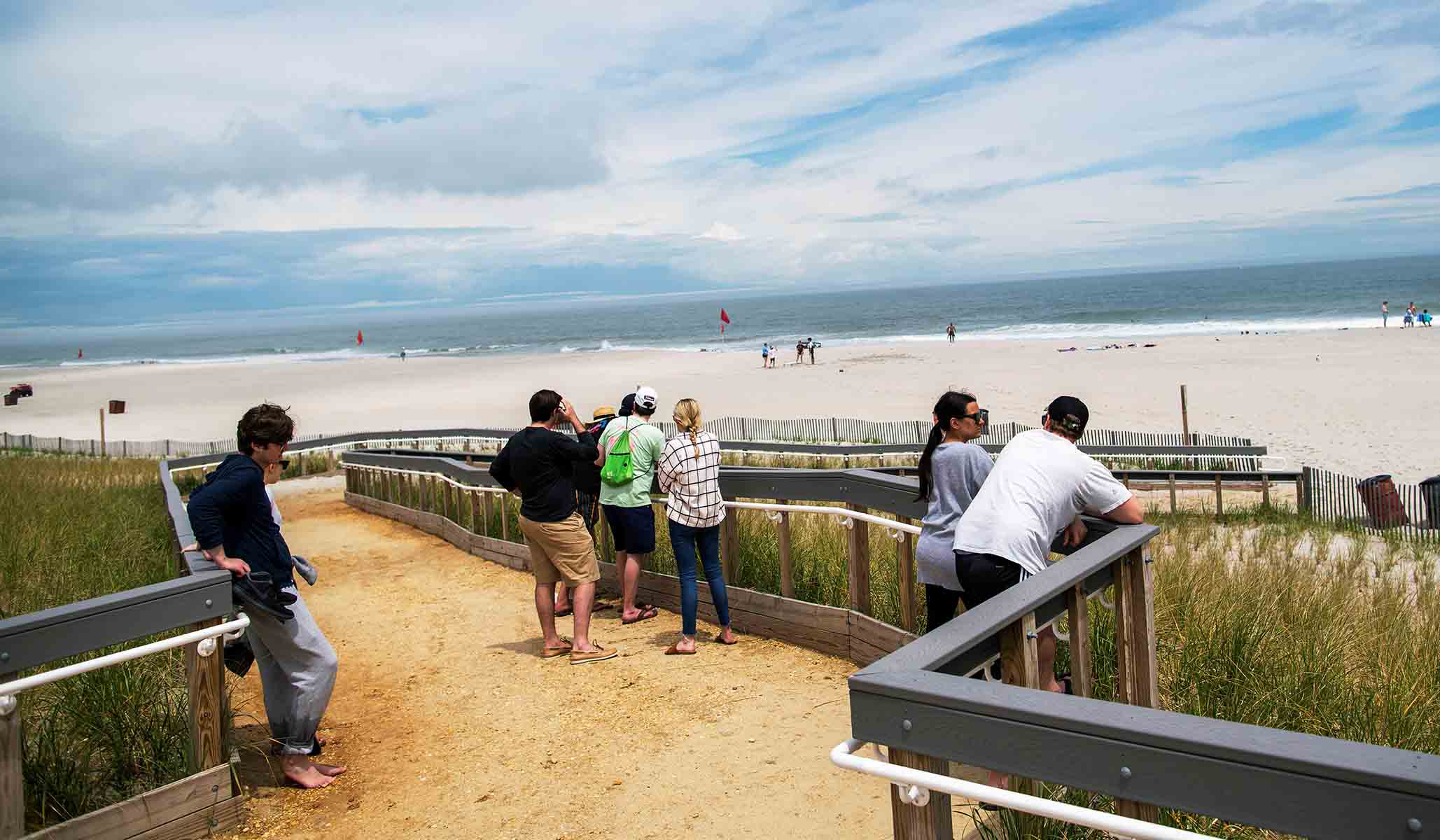


A pre-Independence Day dispatch published in Axios warned readers that the effects of climate change are being felt most acutely by a population that receives a disproportionate share of the press’s attention: wealthy vacationers. So many of the world’s “once ideal” destinations for summer travel are becoming unpleasant, if not uninhabitable, and those with the means are opting for cooler locales “like Amsterdam and Copenhagen.” Axios cites a New York Times report to justify its claims about European travel trends, but it doesn’t stop there. Travelers without the means of well-heeled globetrotters are also feeling climate change’s sting.
“Coastal towns in New Jersey and Florida that are typically popular in the summer are also becoming unpleasant and unsafe as they’re hit with ‘sunny-day floods,’ which is flooding that occurs due to rising seas as opposed to storms,” reads Axios’s summary of the verdict rendered by Project Drawdown’s senior climate scientist Kate Marvel. Her “number one message” is that “nowhere is safe.”
The piece offers little more in the way of evidence that vacationers are shunning the Jersey Shore, deferring instead to statistics about glacial erosion and the decimation of the world’s coral reefs. As a lifelong New Jersey resident, that economically destabilizing development seems like something that would come up in conversation. It hasn’t. But why isn’t this a subject of existential dread in a state that depends on that income stream? Perhaps because the great shunning of the shore isn’t happening.
By the end of the summer season in 2022, it was clear that experts who predicted a “very robust” summer tourism season following the Covid pandemic were right. That year turned in the driest summer on the shore in a half-century, but visitors took the weather in stride and “shrugged off inflation” to return to New Jersey’s beaches in droves. Indeed, “Operators were left with what is becoming a persistent problem: too many customers without enough staff,” the Asbury Park Press reported. When the data was in, the summer 2022 season featured the largest volume of visitors since the onset of the pandemic — eclipsing even pre-pandemic numbers from 2018.
But what about these “sunny-day floods” that have allegedly made life at the shore unlivable? So-called “nuisance” flooding has always been a feature of life in the low-lying towns along New Jersey’s coast, but an increase in the number of high-tide floods has been projected for years. A 2021 Associated Press report details the experience of residents in Bay Head, N.J. — a bayside town adjacent to the high-traffic tourist destination Point Pleasant Beach. The municipality had committed to a review of its “nuisance flooding” preparedness, events that occur between twelve and 18 times per year. Future-proofing this enclave will be a civil-engineering project but, according to the city’s environmental commission, not one that is technologically unfeasible or financially prohibitive.
The deeper into media accounts of New Jersey’s diluvian horrors you go, the harder it is to avoid the conclusion that the press is terribly vexed by the state’s refusal to panic. “You could be forgiven for thinking the Jersey Shore’s local governments are not terribly concerned by such warnings,” read a scolding 2021 New York Times magazine feature. No state has constructed as many new homes in risk zones along the shore in the last decade — “not even Florida, with far more shoreline.” Older and quainter cottages are being replaced with luxury villas, and towns along the coast are committing to flood-mitigation projects and new building codes to meet new environmental challenges. It’s not the effort but the aesthetic that apparently rankles Times profiler Andrew Lewis. After all, some of the stilts onto which beachside hutches are affixed are rising to “cartoonish heights,” and whole blocks are being “cordoned off” as workers upgrade roads and plumbing infrastructure.
Taken together, the impact of climate change on tourism-dependent Jersey Shore communities sounds like a manageable problem. If your activism depends on the public’s belief that “nowhere is safe,” that’s a problem. Perhaps in deference to the principle of “smart brevity,” Axios left all this context on the cutting-room floor. But by handing over the platform to the unverifiable claims of climate-change activists, Axios sacrificed half its mission statement and preserved only “brevity.”
